India
The Best Places to Visit in India
India has a number of great places to visit. UNESCO World Heritage Sites include Varanasi, Agra, and Goa. Varanasi is a city of contrasts. Agra offers ancient architecture and modern culture. And Goa is a popular beach resort. You’ll find many things to see and do in each of these places.
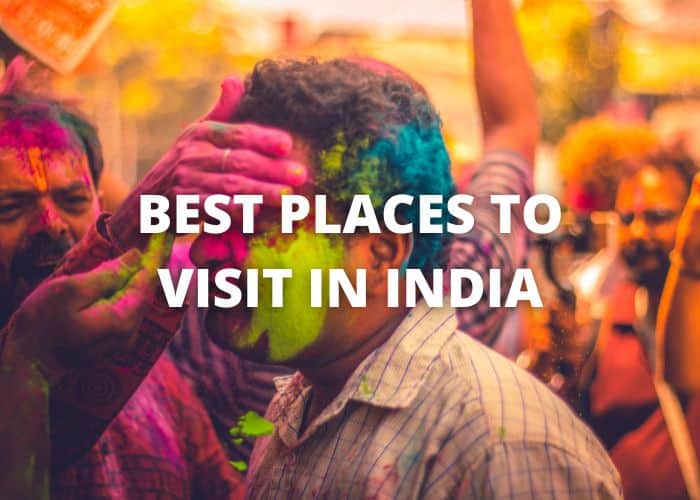
UNESCO World Heritage Site
The Ajanta Caves are one UNESCO World Heritage Site in India. This site, which is surrounded by hills on three sides, is home to 31 rock-cut Buddhist cave monuments. They represent life in India during two periods – the first between 230 BCE and 220 CE, and the second starting with the reign of Emperor Harishena. The art and architecture in this UNESCO World Heritage Site has had a revolutionary impact on the Indian arts, with the majority of its monuments representing the traditions of the Mahayana school of Buddhism.
Another UNESCO World Heritage Site in India is Agra Fort. Built by the Mughal Empire in the 17th century, this fort represents opulence and power. It was listed as a UNESCO World Heritage Site in 2007. The fort is made from red sandstone and is surrounded by moats and towers. The fort is located next to the Yamuna River.
UNESCO has recognized 40 UNESCO World Heritage Sites in India. The latest additions to the list are the Dholavira and Ramappa Temple in Telangana and Gujarat, respectively. These two sites were inscribed on the list after the UNESCO World Heritage Committee held its 44th session in China. These new additions will increase the number of World Heritage Sites from 38 to 40 by the year 2021.
Varanasi is a city of contrasts
The city has a rich history and is considered the holiest city in India. The Brahmani, the majority of the city’s population, are fiercely religious and follow strict rules about food and contact with the lower caste. They are largely vegetarians. The city is home to dozens of temples, shrines, and palaces. Although many of the streets are narrow and impassable to motor vehicles, the outer suburbs are more organized and spacious. The pilgrimage in Varanasi is very popular and draws pilgrims from across India and the world.
While the city is incredibly spiritual and reverent, it is also a city of contrasts. A visit to Varanasi is a chance to witness two opposite worlds side by side. The city has an ancient, religious history and is a crucible for debate. It’s also a place to practice yoga, astrology, and traditional medicine. Its city center also boasts replicas of all the major holy sites in India prior to the 12th century. This makes Varanasi a living symbol and expression of Indian culture. From the pristine riverside ghats dotted with cremation pyres to the colorful market places, Varanasi is a place where religion and culture come together.
Varanasi is a city that is not for everyone. The city isn’t the most beautiful place in the world, but it is a city of contrasts – the ancient city is a swarm of people, shops, cows, and shrouded bodies, and a melange of colors and smells. The city is a fascinating place and one of the oldest continuously inhabited places on earth, and its spirituality is well worth the trip.
Agra is a city of contrasts
Agra, India is a city of contrasts. On one side, the city is a beautiful oasis of symmetry and order. On the other, it is a crowded place. Its population is much larger on the west side, which measures seven kos in length and one kos in breadth. On the east side, however, there are more people and buildings than in several cities in Iraq combined. Because of its mass, it is difficult to move around in the lanes and bazars.
Agra is home to the Taj Mahal, the most famous monument in the world. This marble masterpiece was constructed by the Mughal Emperor Shah Jahan in the 17th century. It covers 42 acres of land, and the pathway to it features fountains and reflecting pools. Its mausoleum is covered with beautiful semi-precious stones.
The Taj Mahal is a world heritage site. It was the site of the world’s largest monument of love and is still considered the pinnacle of architecture. Visitors to Agra should also check out the nearby Agra Fort and Buland Darwaja.
Goa is a popular beach destination in India
Goa is one of the most famous beach destinations in India and is considered the Pearl of the Orient. The beautiful coastline is adorned with palm trees and is dotted with pristine white sand. The beaches of Goa are popular with locals and foreigners alike. During peak season, the beaches are often filled with foreign tourists.
While the beaches of North Goa are quite crowded, the south is a better choice for a quiet vacation. You can experience a calmer environment on the southern beaches, while the northern beaches are popular with parties and booze. For those who want a less touristy beach experience, try the backpacker’s paradise of Palolem, which is located in South Goa. Here, you can enjoy boat trips, sun beds, and alcoholic drinks.
Goa’s beaches are renowned for their beauty and tranquility, and some of the best beaches in Goa are on the outskirts of the city. The tranquility of Agonda Beach is perfect for swimming, and it is home to a turtle reserve. Agonda is also home to INS Kursura Submarine Park, a museum that houses a Kalvari class submarine.
Sikkim is a mountainous destination in India
Sikkim is the second-smallest state in India and one of the most revered tourist destinations in the world. It is renowned for its natural beauty and enchanting views, and draws thousands of tourists each year. The state borders China, but connectivity is poor. Non-Indians must obtain a permit to enter Sikkim. The state is populated with Buddhist monasteries. The food in Sikkim is outstanding.
Sikkim is a mountainous destination that spans over 7,300 square kilometers. It is home to the third highest mountain in the world, Kanchenjunga, which is revered as the seat of the Gods. The state is also known for its wide rhododendron woods and 450 different species of orchids. The flowering season occurs from March to May.
For the nature lover, the region offers hiking trails and mountain climbing. Its lofty peaks are covered with thick layers of snow. You can climb peaks between 4900 and 6100 metres high. Among the peaks in Sikkim is Mt. Khangchendzonga, which is the third highest peak in the world.
Hampi is a city of indigo houses
If you’re looking for a place to visit in India that is filled with historical buildings and ruins, then the city of Hampi is for you. The city is rich with ancient ruins, temples, and monuments. The Virupaksha Temple is one such site, built during the Vijayanagara Empire. This temple contains inscriptions dating back to the 9th and 10th centuries. It is one of the main pilgrimage sites in the region.
The city has a long history and can be traced back to the Neolithic and Chalcolithic eras. It is a UNESCO World Heritage site, and its ceramic potteries are an important part of its history. It was also the site of a hare chase, which led to a popular folklore legend. The incident inspired the guru Vidyaranya to declare that Hampi was an important place.
Hampi’s rulers were passionate about religion and art, and they built magnificent empires. International trade grew to amazing heights during this time, and the Vijayanagara Empire expanded over most of South India, and even beyond.
Kodagu is the “Scotland of India”
The state of Karnataka is home to the beautiful town of Coorg, also known as the “Scotland of India.” Located in the Western Ghats, the town is home to lush greenery and waterfalls. Its climate is pleasant throughout the year. Many acclaimed personalities have visited Kodagu.
The town is also home to the mystical sacred river Kauveri. Its origin lies at Brahmagiri Hill, whose temple marks the river’s fountainhead. The water from this hill rises up and flows underground to form the mighty River Kauveri. The town is visited by countless pilgrims during the month of Kauveri Shankramana.
The town is located on the eastern slopes of the Western Ghats and covers a geographical area of 4,102 square kilometres (1,584 sq mi). To the northwest is the Dakshina Kannada district, while in the east is Mysore. To the west are the Kasaragod district and Wayanad district in Kerala. Although Kodagu is at the lowest point in the Western Ghats, it is home to a few high peaks, including Tadiandamol and Pushpagiri.
India
Best Beaches to Visit in India
If you are planning a trip to India, then you must check out some of its best beaches. Gokarna’s one-kilometer-long golden-white sand is punctuated with fifteen restaurants and a single hotel. The surf is decent but the water is dangerous. You may want to bring your kids here to swim and enjoy the sun.
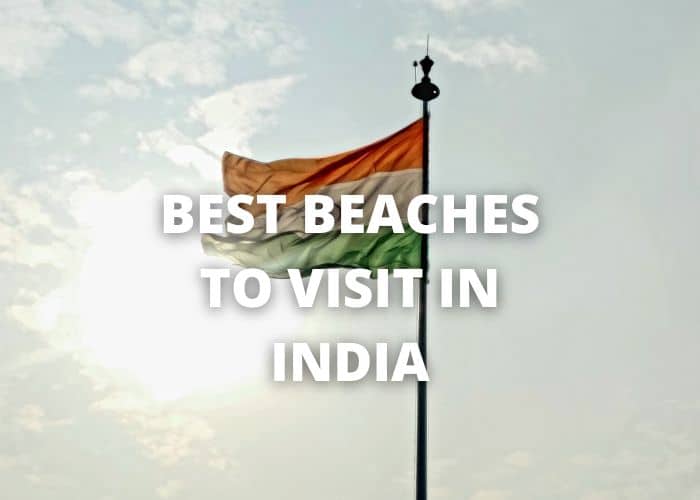
Shankarpur beach
If you are looking for an escape from the hectic city life, Shankarpur beach is the perfect destination. It has sun-bathed beaches, lush greenery, and all the luxuries of a private beach. The area is dotted with sea resorts, hotels, tourist lodges, and other facilities.
Located in East Medinipur district of West Bengal, Shankarpur beach is an ideal place for relaxation and enjoyment. This beach is less crowded than other West Bengal beaches and has several picturesque beaches. You can rent a boat to explore the surrounding islands, or go for a swim in the ocean.
While Digha Beach is a popular destination for surfers and families, Shankarpur is a little less popular. The sun-kissed, pristine beach is lined with casuarina trees. This undiscovered beach is perfect for those seeking a break from the bustling city.
Shankarpur beach is located in the eastern part of the state. It is close to the popular coastal cities of Puri and Digha. Visitors who are looking for a remote beach in Bengal should visit Shankarpur, which is a relatively virgin beach. In addition to being a beautiful, relaxing spot, the beach is also ideal for swimming and bird watching.
Shankarpur is easily accessible by public transport. The nearest railway station is Digha, while it is possible to travel by bus. In addition, there are trains from Kolkata on some days of the week. The town has many restaurants that serve tasty sea food.
Corbyn’s Cove beach
If you are fond of scenic views and photography, Corbyn’s Cove beach is the ideal place to visit. It is accessible throughout the day and is ideal for sunrise or sunset. The nearby beach is also a great place for eating snacks and drinking coffee.
You can also visit the nearby Snake Island, which is famous for its large marine life. The area is home to many deadly snakes, so you will need to bring plenty of sunscreen lotion. Also, carry some cash with you as ATMs may not be available.
To reach Corbyn’s Cove beach, you must first reach Port Blair. You can take a bus or an auto rickshaw to the beach. There are also private taxis and motorcycles for hire. For a comfortable stay, you can book a room at Hornbill Nest Resort, which is located close to the beach.
While you are in Port Blair, you can also visit the other islands in the area. Besides Corbyn’s Cove, you can also explore Mount Harriet, the third highest mountain in Andaman and Nicobar islands. This national park is spread over 4.62 square km, and has many picturesque sights to see. The landscape also boasts the intricately carved havelis and ridges of the Aravali hills.
Corbyn’s Cove beach is located eight kilometers from Port Blair and is free to visit. The beach is dotted with coconut palms and turquoise waters. It is also popular for its water sports activities, including surfing. You can also go for a picnic on the beach.
Mandvi beach
Mandvi Beach is located near the city of Mundra. It offers great sands and warm water and is a popular tourist destination in the state. Mandvi Beach is also a popular place for water sports such as paragliding and water scooter rides. The beach is very clean and spacious. Visitors can also enjoy a speed boat ride and enjoy the windmills that line the shoreline.
Mandvi Beach is one of Gujarat’s most beautiful beaches, with many water sports to enjoy. This beach is also popular for its windmills, which are part of the project that built Asia’s first windmills. There are plenty of food stalls at Mandvi and the windmills are a beautiful sight to look at.
Mandvi was once an important port for the trade of goods between India and the Middle East. Its fishermen helped Vasco De Gama to get to Zanzibar. Today, fishermen from Mandvi manufacture fishing boats, which are capable of carrying 250 to 1000 tons of cargo.
The town of Mandvi is located on the Gujarat coastline and is popular for its pristine white sand. The beach is also home to flamingos, which often float above the water’s surface. The beach is also a good place to camp and enjoy the sunset.
Varkala beach
Varkala is an amazing beach destination where you can enjoy swimming and sunbathing. It is a sunbather’s paradise with pristine blue waters and many cafes and restaurants offering global cuisines and all kinds of music. Whether you are looking for a romantic atmosphere or want to explore India’s cultural heritage, Varkala has it all.
Varkala is home to many beaches, but not all of them are suitable for sunbathing. You’ll find many restaurants, spas, and yoga classes here. It is also a great place to take part in ayurvedic practices in a relaxing environment.
Another historic landmark that is near the beach is the Anjengo Fort, which was built by the English East India Company in the 17th century. This fort was once England’s entryway into India from the Malabar coast. The fort’s grounds are full of lush green lawns and a lighthouse.
Another popular destination is the Papanasham Beach, which is located 15 km south of Varkala. The cliff overlooking the beach has a fresh water spring that’s believed to cleanse your sins. The beach is open from 6AM to 6PM, and there’s no entrance fee.
If you don’t want to visit the beach itself, you can head to the nearby Kappil Lake. This lake is a peaceful and picturesque waterway. It’s a short drive away from Varkala and is a popular picnic spot. You’ll find a great view of the sunset and sunrise from here.
Pondicherry beach
A beautiful, quiet beach in the Indian state of Pondicherry is a popular destination among travellers. This beach is dotted with palm trees and pristine sea water. It is a popular choice for leisure travelers, photographers, and peace seekers. You can spend a day strolling around the beach or enjoy a spot of fishing. However, you must carry food with you, as there are limited options on the beach.
The town is also renowned for its Portuguese-style architecture and an old-school vibe. But despite its old-world charm, the beaches in Pondicherry are truly unique. Whether you are visiting for a romantic getaway or a family vacation, Pondicherry is the perfect destination for your next getaway.
A typical Pondicherry beach is the 1.5-km-long Promenade Beach. It is a wonderful spot for strolling, jogging, or yoga. This stretch of sand is also well maintained and provides a great place to reconnect with nature. You’ll love its soft sands, which act like pillows for your tired feet. As a bonus, the view is also a nice comfort.
Paradise Beach is a beautiful white sand beach in Pondicherry. It offers the perfect balance between tranquility and action, and is popular with both locals and tourists. The beach is also well-maintained, with changing rooms and showers on the shore. There are a variety of water sports available here, including kayaking and fishing.
Dikha beach
One of the most beautiful beaches in India is Dikha beach, a stretch of sand and pristine blue water. It is located 15 km from Vizag and is popular among tourists. Visitors will love the cool atmosphere and calming surf here. The beach is also a great place to enjoy sunbathing and swimming. This beach is also home to an old Shiva temple.
About 18 kilometers from Digha is another popular beach called Tajpur. This crescent-shaped beach offers panoramic sea views. Visitors may also see red crabs playing hide-and-seek in the sand during the early morning hours. The area is well-connected to the rest of the country and can be reached by all forms of transportation.
The island has a population of about 10,000 people and is only 1.8 square miles in size. It is located in the state of Andhra Pradesh and is popular with locals for picnics. Visitors can also rent kayaks and surfboards. While it is not recommended for beginner surfers, those looking for an adventure can go kayaking or surfing on the island.
Dikha is a picturesque paradise for beach lovers. It is also home to the largest marine aquarium in Asia. Digha beach is an ideal place for a weekend trip and offers plenty of entertainment. There are local handicraft shops and restaurants along the shoreline. Paragliding is a fun activity for those who love adrenaline.
India
Best Time to Visit India
If you’re looking for the best time to visit India, you’ve come to the right place. The best months to visit India are March, November, and December. These months offer the most pleasant temperatures. You’ll find many festivals, markets, and events during these months, so you’re sure to have a great time.
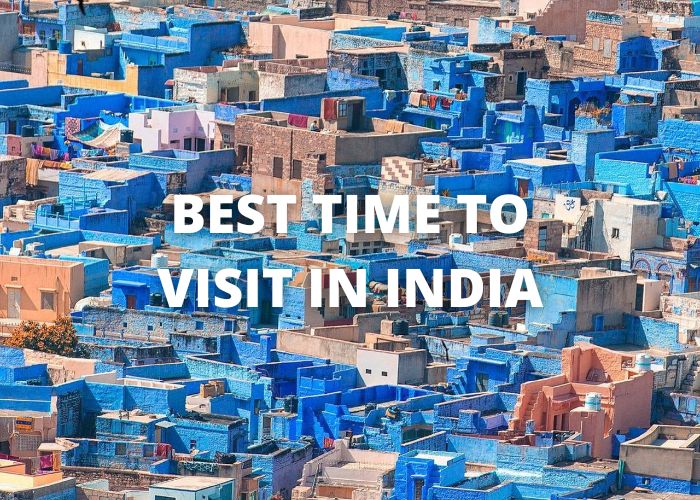
March
March is an ideal time to visit India because it has a mild climate, which makes it ideal for walking and sightseeing. It is also the start of the trekking season in the Himalayas. The average temperature in Manali during March is 70 degrees F. During this month, you can also see the famous Holi Festival, which is celebrated all across India. This festival represents the victory of good over evil. March is also a great time to visit Delhi and the Golden Triangle. You’ll be able to enjoy the sites of the Golden Triangle and other places of interest without the heat or heavy fog.
During March, the number of tourists visiting the country is at its lowest, which makes it ideal for budget-conscious travelers. There are also massive discounts on hotels during this time. The temperatures will be pleasant, and you’ll have fewer people to contend with. Also, you’ll be able to enjoy major festivals and other cultural offerings.
The weather is pleasant in most parts of India during March, but it can be chilly at night. In the Northeast, the monsoon begins to taper off, making it a popular time for tourists. Goa is particularly crowded during Christmas, so you’ll need to plan your visit accordingly. The weather during this time is also ideal for sightseeing, as the crowds won’t be as bad as they are in November. You’ll also be able to see the spectacular Diwali Festival, which is a religious festival for Hindus, Jains and Sikhs.
Visiting India during this time is perfect for those looking to experience its varied landscapes and different weather patterns. This time of year is also a great time to visit the popular tourist destinations, such as Mumbai. Although these regions are known to be hot and humid, they’re not nearly as crowded during the cooler months.
October
October is a great time to travel across India. You can find mild temperatures across the country and you can easily visit popular tourist destinations. In areas such as Kashmir, where the monsoon hasn’t yet finished, the temperature will still be pleasant, even though the nights are still cold. You can even visit parts of the Himalayas in October, when the snow hasn’t yet started falling. Another plus: there will be less tourist traffic.
October is the best time to visit India if you want to experience its diverse landscapes. The climate is generally pleasant and dry, making it a great time to travel to the country. It’s important to note, however, that the country doesn’t have a consistent climate throughout the year. Depending on the region, the country can experience hot weather in the north and cold weather in the south.
October is also a great time to visit the Golden Triangle. This region of India is home to some of the world’s most spectacular sights, such as the Taj Mahal. This landmark is a popular tourist destination all year long, but October is the best time to visit to enjoy the most temperate weather. Temperatures in the Golden Triangle are typically around 22-32degC. Touring the Golden Triangle during this time is especially fun as the festival is a major highlight. Just make sure you avoid the May heatwave and June monsoon season.
While summer months are miserable for coastal regions, summer months are ideal for hill stations and Rajasthan. Monsoon season is also ideal for rejuvenation therapies, as the pores open up during the monsoon season, allowing the oils in the skin to penetrate the body fully. The monsoon season is also the perfect time for river cruising along the Ganges. However, keep in mind that summer months are also the wettest month in the country.
November
If you’re planning a holiday to India, November is a great time to go. Weather is warm and the humidity is low, making it a comfortable time to visit. It’s also the best time to check out the magnificent palaces of Delhi and Agra. You can also visit places like Gir forest in Gujarat and Jim Corbett national park in Nainital. Many places are less crowded during November, and you can enjoy the sunrise or sunset without the crowds.
During autumn, the monsoon season ends and temperatures increase in cities throughout the country. While temperatures are hotter in the heartland, occasional rains keep the countryside green and blooming. November is another time when the temperatures are at their highest, and the bustling streets of major cities are filled with traditional events and festivals. In the inland, temperatures can reach 40degC, so be careful of the midday heat.
The golden temple of Guru Nanak is another place to visit during November. This temple is famous for its yearly celebrations. The date varies each year, but it falls during the month. Amritsar is a must-visit place during November. The weather in India is ideal for sightseeing.
During the monsoon, rains prevent tourists from visiting the mangroves. However, the temperature is still pleasant enough to visit the Sunderbans. This pristine ecosystem in India is perfect for nature lovers. In November, you can also visit the Tagore Ashram, which is home to a museum and art gallery of the Nobel Laureate.
While the weather is pleasant, monsoon flooding can disrupt communications and cause widespread destruction. In the foothills of the Himalaya, landslides are common and can cut off entire valley systems for weeks. However, you should consider a few factors before you choose a date for your trip. The most ideal time to visit India is November to March, when temperatures are cool and sunny. It is also a good time to visit cities like Delhi and Agra. Central India is also at its best during this period.
December
December is one of the best times to visit India. The temperature is comfortable, and you can enjoy the natural beauty of the country. You can enjoy sightseeing and go for trekking and skiing. In December, you can also go on a mystical deodar forest tour and witness the beautiful snowfall. Also, you can attend the annual festival, the Hornbill Rock Festival, which brings together musicians from across the country.
Mid-December to early February are the wettest months in India, so you should avoid them if you plan to visit Delhi. In addition, the mornings can be very cold, and cities like Agra are covered in mist. While December is a pleasant time to visit India, it is important to consider the weather when planning your trip.
The winter months are perfect for wildlife spotting. While April and May are crowded and hot, October and November offer cooler temperatures. These months are also cheaper than December to February. There are suitable experiences during each month, and each month has its own benefits. If you are visiting India during these months, you can take advantage of great travel deals and get the most out of your time in the country. The climate is quite diverse in different parts of the country. It’s best to plan your trip based on your preferences.
The shoulder months of December and January are perfect for traveling to the Himalayas. The temperature in the Himalayas is moderate compared to the rest of the country. And there are few roadblocks. This season is also ideal for trekking in the Himalayas. However, bear in mind that you may have to deal with cold temperatures during the winter months, and hotels can close. You will also find that many trails become impassable.
February
Visiting India in February is a great way to experience its diverse weather conditions. Temperatures are relatively moderate and are usually between 75 and 52 degrees Celsius, making it the perfect time to see the Golden Triangle, Rajasthan, and Kerala. In the South, Bengal and Kerala experience the dry season in February. The best time to visit Kolkata is in December or January, when temperatures are more bearable.
While February is not the best time to visit Delhi or other metropolitan cities in India, the state of Sikkim is still worth exploring. This state is renowned for its spectacular waterfalls, enchanting mountains, and charming cultural festivals. A visit to Sikkim during February is especially a good idea if you want to experience the enchanting Losar festival.
In central India, the small town of Khajuraho is one of the most prominent heritage sites in India. The town is home to over 90 Jain and Hindu temples with intricate carvings and is listed on the UNESCO world heritage list. This place is a must-see for heritage-lovers.
While February is the end of the tourist high season in India, it is still a great time to visit the country’s national parks and other places. This is because the early rains have already ceased in the Northeast States, and the wildlife can be spotted more easily. In addition, Holi, the most colourful festival in India, is celebrated during March. The Hindus celebrate the beginning of spring by dousing one another with water. Moreover, Tibetan Buddhist monasteries hold masked dances during Losar, which often falls during February.
Although monsoon season can be unpleasant, it brings the natural world to life. The dry grasslands and forests become green and lush. Farmers and other people welcome this season with full productivity. During the monsoon rains, rivers and lakes fill up with water and waterfalls become stronger.
India
Best Cities to Visit in India
This list of the best cities in India is not exhaustive – it covers a number of cities, from the deteriorating masterpieces of Kolkata to the marble mausoleums of Agra. We also cover Pushkar, a city of lakes and ghats, and Jaipur, a beautiful city dotted with lakes and ghats.
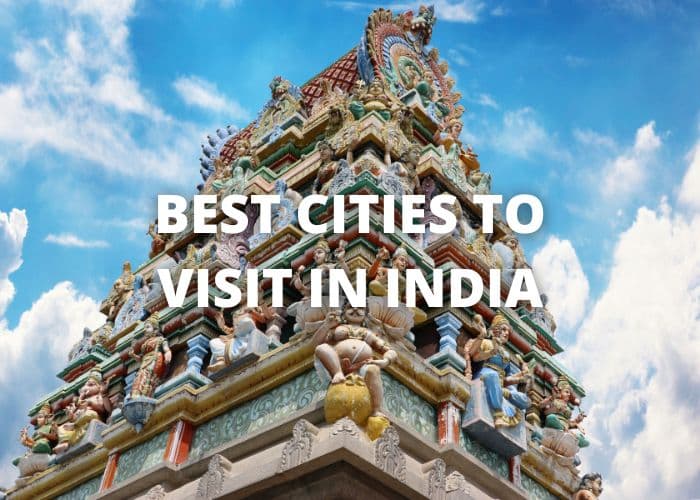
Kolkata is a decaying masterpiece
One of the best places to see in Kolkata is the State Archaeological Gallery, founded in 1962. Here you can view antiques from the Paleolithic, Mesolithic, and Neolithic periods. It is a must-see for anyone who appreciates the arts.
The city is packed with a wide variety of attractions and sites. Whether you’re interested in British architecture or ancient traditions, you’ll find plenty of them in the sprawling metropolis of Kolkata. Whether you’re looking for a relaxing holiday, a cultural adventure, or an exotic adventure, this city has it all.
The city was founded in 1690 and served as the British imperial capital until 1911. Even though the city has undergone a transformation since then, it still retains much of its charm. Hundreds of crumbling buildings are a testament to its past as the capital of the British Empire. They provide a unique insight into the subcontinental culture and history.
A beautiful park situated in the city centre is a must-see in Kolkata. Whether it’s a romantic evening with your significant other, or an afternoon picnic with the family, a visit to this park is sure to delight your senses. It’s not only the city’s parks that offer scenic views of the city. You can also visit its Zoo, which is home to several species of birds, including Macaws, Swinhoe’s Pheasant, and Lady Amherst’s Pheasants.
Agra is a marble mausoleum
The Taj Mahal, an enormous marble mausoleum complex in Agra, India, is one of the world’s most famous sights. The Taj Mahal was commissioned by Mughal emperor Shah Jahan and built over a period of 20 years. It is a superb example of Mughal architecture, combining Islamic, Persian and Indian influences. Its shimmering white marble makes it one of the world’s most iconic structures. This breathtaking monument is an enduring symbol of India’s rich history.
The Taj Mahal is the national symbol of India. A UNESCO World Heritage Site, it attracts millions of tourists every year. However, the huge number of visitors has the potential to negatively impact the mausoleum’s physical fabric. To ensure the Taj Mahal’s future, the city of Agra has implemented measures that help protect its natural beauty. The city’s government has prohibited new industrial development, and only non-polluting vehicles are allowed near the mausoleum.
The Taj Mahal is surrounded by a walled garden. Visitors enter the mausoleum through a large gate. Inside, the mausoleum is topped with four towers and is decorated with swirling geometric designs. The white marble mausoleum stands in a vast compound of gardens and lawns. During the day, the Taj Mahal is dotted with curly-horned deer.
Jaipur is a city of lakes
Despite the fact that Jaipur is a city filled with monuments and historical sites, the city itself is not known for its lakes. There are 6 lakes in the city, but they are largely overlooked, and it’s easy to see why. The largest is Sambhar Lake, which is shaped like an ellipse and surrounded by the Aravalli Mountains. It also features a famous temple, the Shakamhari Devi, on its shores. This lake is also a major producer of salt, accounting for 9 percent of the salt produced in India.
Jaipur is home to the Albert Hall Museum, Birla Auditorium, City Palace, and Amer Fort, all of which are major tourist attractions. There are also several World Heritage sites in the city, including the Govind Dev Ji Temple and the Garh Ganesh Temple. Visitors should also be sure to visit the Sanghiji Jain temple and Kanak Vrindavan park.
The city is home to some of the country’s largest lakes, and the surrounding forests are home to a wide variety of species. The Chandlai lake, for example, is 140 years old and is a popular tourist attraction. It is also a prime location for photography, as the lake is surrounded by lush vegetation. Aside from the lakes, the city is also home to the remnants of an historic fort, which offer a unique insight into the city’s rich cultural heritage.
Pushkar is a town of ghats
Pushkar is a holy town that is often visited by pilgrims. It is also known for its annual hot air balloon festival and camel fair. When visiting Pushkar, be sure to dress appropriately. Men should wear long trousers and women should cover their legs and shoulders. It’s advisable to bring extra pairs of socks and several layers of clothing. It is important to be aware of pigeon and dog poo on the ghats.
Pushkar is the home of the Brahma Temple, one of the three original Hindu gods. The temple has a tall red spire and is surrounded by colorful columns. Visitors are not permitted to take photographs inside the temple. Visitors are also required to store their shoes in rented lockers.
Another important attraction in Pushkar is the Pushkar Lake. This lake is similar to Mansarovar Lake in Tibet and has become a religious center for Hindus. According to Hindu mythology, Lord Brahma dropped a lotus into the valley, forming the lake. The Pushkar ghats are 52 in number and surround the lake. The lake is believed to have healing powers and people assemble at the lake on the Kartik Purnima festival every year.
Mumbai is a cosmopolitan city
Mumbai is India’s most populous city and one of the largest urban areas in the world. It was founded on the site of an ancient settlement. It took its name from the local goddess Mumba, a form of Parvati and the consort of the god Shiva. A temple dedicated to the goddess once stood in the southeastern part of the city. During the British colonial era, Mumbai was known as Bombay. This name was restored to official use in 1995, but the locals continued to use Mumbai.
The population of Mumbai is estimated at over 22 million. It is the largest city in India. In recent decades, the metropolitan area has experienced rapid growth, with a population density of over five million people per square kilometre. This growth is primarily due to migration from other parts of India in search of employment opportunities.
Mumbai is a multilingual city, but it also retains a distinctly regional character. Despite this, it has become India’s commercial and industrial center, with a large number of international and domestic business activities.
Hyderabad is a trading outpost
Hyderabad is a trading outpost in India with good connections to both the local and external economies. Its industrialization has been spurred by public investments and agricultural surpluses from coastal Andhra Pradesh. The city is poised to grow further in the future as it has access to markets in south-east Asia and western Asia.
In the early eighteenth century, Muslims began establishing a presence in Hyderabad. The city grew from a single village to a thriving trading center. The city is an important port, and is home to many Muslim, Hindu, and Sikh communities. In the 17th century, the city was home to the Bussy-Castelnau, a French trading outpost. The French were attracted by the thriving commercial center and wanted to seize the area as their own. The French, however, were unsuccessful and were driven out of the area.
The Telangana government is currently focusing on building a World Trade Centre (WTC) in the city. Its WTC will be a third in India, after the Bangalore WTC and Mumbai’s India INX. It is expected to cost up to Rs 300 crore.
Chennai is a stopover city
If you’re looking for a quick stopover in India, you should consider visiting the city of Chennai. It has an international airport, which is located close to the city center. From here, you can explore the city and nearby attractions. Getting from the airport to the city center is easy, and there are many public transportation options available.
This large city, formerly known as Madras, is situated on the east coast of India. The climate of Chennai is largely influenced by the NE monsoon, which brings about 65% of the city’s rains. This monsoon can also bring cyclones, and these storms may make their way through the city towards west Bengal, Bangladesh, or Myanmar. The rainy season for Chennai is from October to December.
The city’s history can be traced to 1688, making it the second-oldest municipal corporation in the world. In 2011, it expanded its jurisdiction to 426 square kilometres and has 200 wards. The city is governed by the mayor, Saidai Sa. Duraisamy, who is elected by the local population.
-

 South Korea3 years ago
South Korea3 years agoBest Volunteer Programs in South Korea
-

 Adventure Travel2 years ago
Adventure Travel2 years agoWhat Are the Challenges of Adventure Tourism?
-

 Volontariat à l'étranger2 years ago
Volontariat à l'étranger2 years agoVolontariat Thaïlande
-

 Freiwilligenarbeit im Ausland2 years ago
Freiwilligenarbeit im Ausland2 years agoFreiwilligenarbeit Thailand
-

 Vrijwilligerswerk2 years ago
Vrijwilligerswerk2 years agoVrijwilligerswerk Thailand
-

 Adventure Travel2 years ago
Adventure Travel2 years agoTypes of Adventure Tourism
-
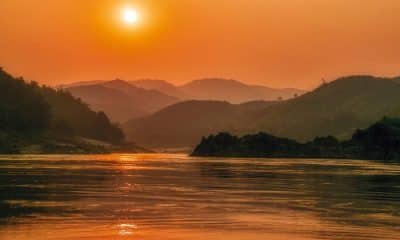
 Freiwilligenarbeit im Ausland2 years ago
Freiwilligenarbeit im Ausland2 years agoFreiwilligenarbeit Laos
-

 Vrijwilligerswerk2 years ago
Vrijwilligerswerk2 years agoVrijwilligerswerk Laos






















